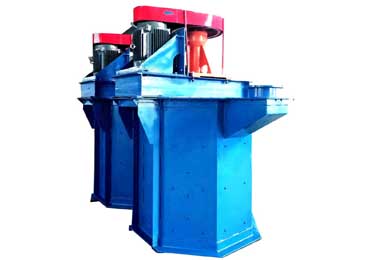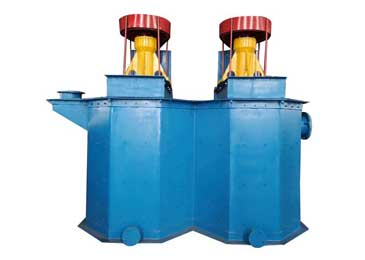


Attrition Cell Scrubbers
Attrition scrubbers are also called attrition cells, which are generally used before or after sand screws in sand washing plant to scrub the surfaces of particulates, break down impurities, and remove it from competent aggregate material to reduce the product turbidity.
We design singl and multiple cell attrition scrubber units for different scrubbing requirements of mineral materials.
Or Call Us Now +86-18736301510
1.Large scrubbing intensity and good effect. The unique tank structure and impeller configuration increase the scrubbing strength by about 30% compared to the conventional scrubber of the same specification.
2.Capacities ranging from 2-100 T/H
3.Low power consumption, wear and corrosion resistance. Rubber-lined for wear protection.
4.Simple structure, large effective volume, small floor space. Designed for easy drive removal for quick maintenance.
5.Variable speed options, low circumferential speed and long service life.
6.Available in 2-, 4- or 6-cell configurations.
Features & Benefits
1.Large scrubbing intensity and good effect. The unique tank structure and impeller configuration increase the scrubbing strength by about 30% compared to the conventional scrubber of the same specification.
2.Capacities ranging from 2-100 T/H
3.Low power consumption, wear and corrosion resistance. Rubber-lined for wear protection.
4.Simple structure, large effective volume, small floor space. Designed for easy drive removal for quick maintenance.
5.Variable speed options, low circumferential speed and long service life.
6.Available in 2-, 4- or 6-cell configurations.
Working principle
Attrition Scrubbers usually provide most powerful scrubbing action at densities of 70%-80% solids by weight. When working, slurry enters the scrubber cavity through the feed pipe, and produces severe turbulence under the strong agitation of impeller.
The ore particles have great momentum in them and produce intense friction and collision with each other.
The impurity membrane wrapped on the surface of ore is easily peeled off the mineral surface by friction and impact due to its low strength. The cement surface is immersed in water and then the mineral particles are strongly rubbed and collided with each other to loosen and disintegrate, thereby achieving the separation of clay and ore.
These impurities and clay are disintegrated and exfoliated into the slurry, and the slurry can be separated by subsequent desliming. In the actual production process, different agents should be added according to the actual conditions of mineral.
Specifications
| Model | Feeding Size (mm) | Capacity (t/h) | Box Size (m³) | Impeller Diameter (mm) | Power (kw) | Overall Size (mm) |
| CX1-1 | ≤10 | 10-30 | 1 | 480 | 15 | 1180*1150*2060 |
| CX1-2 | ≤10 | 10-30 | 1*2 | 480*2 | 30 | 2280*1150*2060 |
| CX2-1 | ≤10 | 20-50 | 2 | 520 | 30 | 1600*1600*2780 |
| CX2-2 | ≤10 | 20-50 | 2*2 | 520*2 | 60 | 3080*1600*2780 |
| CX4-1 | ≤10 | 40-80 | 4 | 770 | 55 | 1900*1760*3470 |
| CX4-2 | ≤10 | 40-80 | 4*2 | 770*2 | 110 | 3720*1760*3470 |
Contact Form
Get in touch with us and one of our team will be with you shortly.
Disclaimer:
All informations contained in this site is provided on an "as is" basis with no guarantees of usefulness or timeliness. For exact specifications, please contact with us: export@lylzzg.com

